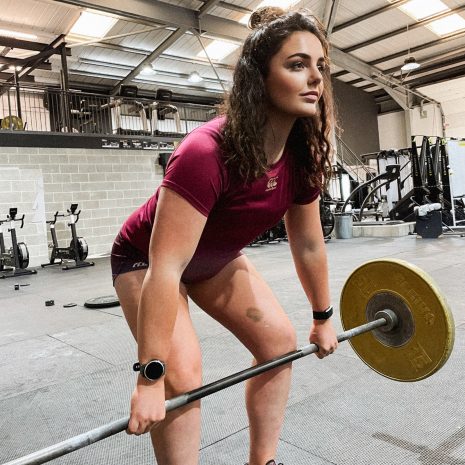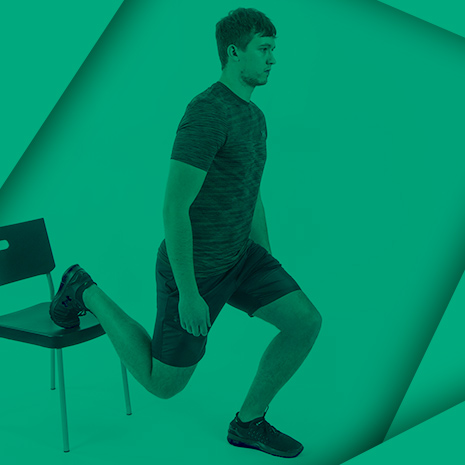Recovery for Rugby Players
As we have detailed in the past, your training is only as good as your recovery. With this in mind we reached out to Scotland and London Irish tight head prop, Geoff Cross, for his advice for all players of the game when it comes to recovery. Given that he is also a fully qualified doctor, Geoff has a unique perspective when it comes to making sure your body is ready for whatever you want to put it through next.

Recovery covers the process you go through immediately and the following days after a training session or game. Whether it’s how you cool down, stretch out tired muscles or what you eat, all aspects of recovery play a key role in preparing you for the next session. Without good recovery, maintaining a good training regime is pointless if not impossible.
So if you’re struggling to keep on top of your recovery, take some advice from a professional.
To Get Results, Recovery is Key – Geoff Cross’s Recovery Protocol
There is no point training really hard and pushing your body to its limits unless you take the time to recover appropriately following a training session. Scottish internationalist and London Irish tight head prop, who is also a qualified doctor, shares the protocols which work for him to ensure his body recovers fully after it has been put through its paces in the gym and on the pitch and explains why recovery can help drive results.
The key things to remember to ensure you recover correctly are, movement, food, fluids and sleep. Recovery is simple. However, mistaking simple for easy is exactly that, a mistake. Recovering well takes discipline. If you are recovering appropriately you will only be doing it at the end of a session: when time is short, you’re tired, most likely sore and possibly still bleeding.
There are plenty of reasons not to do recovery. Ignore those reasons.
There is a good chance your mates will have gone in too. Pain and fatigue inspire laziness and makes cowards of us all. There are plenty of reasons not to do recovery. Ignore those reasons.

To get the most out of recovery you have to recover every time you have trained to fatigue. Ask yourself if your training session has left you feeling like you have earned the chance to put your feet up. If so then I believe that is a session you should focus on recovering from.
Recovery is not a tool to get more out of the session you just did. Recovery is a tool to get you ready to maximise the benefit from your next session earlier than those who do not take their recovery opportunities. If you take your recovery opportunities you will be able to train more frequently and extract more value from the sessions you do. If you do this consistently, over time, the positive differences build up. Recovery reduces injury risk.

There are marginal gains to be made using items like compression stockings and swimming pools. Cold baths have their place. That place is around times of heavy competition. Although they can aid recovery they also blunt training adaptation so you want to be as conditioned as you want to be before using them. Remember these marginal gains are only worth it if you are doing the important stuff: movement, food and fluids and sleep.
if a session has left you feeling like you can put your feet up…that is a session you should recover from.
If you discipline yourself to recover well you will enjoy a freedom that only comes from being fitter and more skilled than your opponents. Here is the why; If you choose now to do what others won’t, in the future you will be able to do what they can’t. That is how your discipline sets you free. What are you waiting for? Get after it.
These are the protocols I follow:
- Begin with five minutes of steady state movement 3-5/10 rate of perceived exertion if you have a heart rate monitor that maps to a heart rate of 120-140 beats per minute. Follow this with a one minute leg drain. To do this lie on your back with your feet higher than your head. A training buddy can hold your ankles in the air and shake your legs out. If alone, rest your heels on a chair, bench or wall.
- Prioritise bigger muscles and joints over smaller ones as the bigger ones do more work. Focus on the parts which are tight. If the pain is bad when you begin and continues to gets worse, listen to your body and stop. If you don’t you’ll do more damage than good.
- Eat as much clean food as you can stand. A meal of clean food looks like this; nutrient dense calories mostly from plants to provide complex carbohydrate with fibre, and protein from lean meat and dairy. If you get the plant and protein mix right the fat content should take care of itself. You should be full. Remember your purpose; you are fuelling the adaptation as well as the training.
- Drink plenty of non-caffeinated and non-alcoholic fluid as it takes to stop you from being thirsty.
- Ensure you get plenty of sleep.
Hopefully you’ve found something to help with your recovery protocol but make sure check out the rest of our Training articles for more tips for rugby players.
Let us know what you’d tips you’d like from the Professionals in the comments below and make sure to share this with your teammates that need to work on their recovery.




Comments